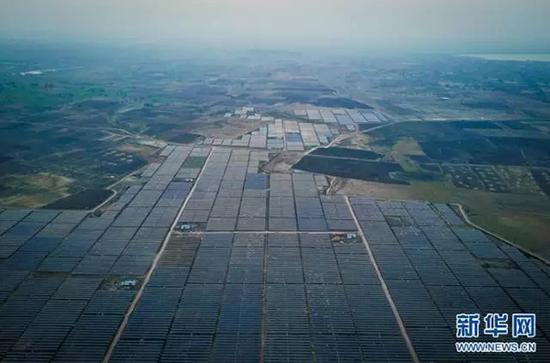The article published on the "Economic Times" website of India on July 16 entitled "How China Overtakes India and Occupies India's Family, Market, and Economy in Trade" stated that as the political dilemma between China and India continues to heat up, On the cold Himalayan plateau, temperatures have suddenly increased. Around the Donglang area, disputes between India and China can not be made. India’s domestic calls for boycotting Chinese goods have grown louder and louder. The National Volunteer Service Corps and its affiliated organizations have also joined in and are further enlarged through social media networks.

In November 2016, posters on the streets of India were promoted to “boycott Chinese productsâ€. Data map
However, deep into India, China’s “occupation†with India is a reality. Josh, chief economist at Credit Ratings and Investment Services in India, said: "Although India-China trade is seriously out of balance, it is an indisputable fact. It has not been affected by political differences."
According to the article, the trade balance has seriously fallen to the Chinese side. From 2011 to 2012, the Indian-Chinese trade deficit was 37.2 billion U.S. dollars. Six years later, the trade deficit has expanded to 51.1 billion U.S. dollars. For both countries, the current confrontation is more complicated than the 1962 war.
According to the article, over the past few years, China has introduced a series of policy measures to stimulate, protect and nurture enterprises. Now, in most industries, China has its own multinational giant. Slowly, these Chinese companies have evolved into world-class multinational corporations that rival Western multinationals. There are few multinational companies with international competitiveness in India, and the $3 trillion economy in the subregion is not enough for the 11 trillion US dollar Chinese economy.

In the first quarter of 2017, China’s smartphones accounted for 51% of the Indian smart phone market. Internet data center diagram
According to the article, India’s telecommunications industry is now occupied by Chinese companies. In the mobile phone industry, Chinese brands control a 51% share of the Indian smart phone market, and India’s annual telecommunications equipment imports exceed RMB 73.6 billion.
Only during the "Twelfth Five-Year Plan" period, nearly 30% of India's electricity production capacity comes from Chinese equipment. In the fast-growing solar industry, from April 2016 to January 2017, India imported 87% of its solar energy equipment from China. In addition to mature industries such as electricity and telecommunications, Chinese companies have also been attacking cities in emerging industries. The automotive industry has attracted China’s largest foreign direct investment.

A photovoltaic power station near Hyderabad in southern India. Chinese enterprises provided part of the solar panel components and a full set of automatic solar tracking support system for the power station. Xinhuanet data map
The article stated that the fierce wording and boycott call now occupy the Indian public opinion center. Does India resort to this boycott? When Chinese products dominate bilateral trade, it is obviously not feasible.
Consider the worst scenario: If the borders are upgraded, trade is reduced, which side's losses will be greater, it is not necessary for the economists to understand. "The only group disappointed by boycott is the Indian middle class," said Halsh Pant, head of strategic research at the observer research foundation.
Rechargeable Disposable E-cigarette
Rechargeable Disposable E-Cigarette,Disposable pod,Rechargeable Vape,Pod Vapes E-Cigarettes
Shenzhen Xcool Vapor Technology Co.,Ltd , https://www.szxcoolvapor.com
